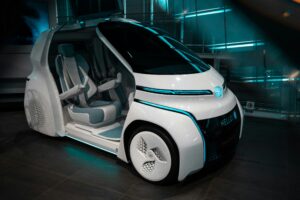Have you ever imagined a world where robots are not just a thing of science fiction, but a reality in everyday life? Well, that future might be closer than you think. With advancements in artificial intelligence and automation, businesses are increasingly turning to robots to revolutionize their operations.
According to a recent study by the McKinsey Global Institute, automation could potentially increase global productivity by up to 1.4% annually. This is a significant figure that cannot be ignored by businesses looking to stay competitive in the rapidly evolving market landscape.
One company at the forefront of this movement is Amazon, whose fulfillment centers are now home to a fleet of robots that assist human workers in packing and shipping orders. These robots have significantly increased productivity and efficiency, allowing Amazon to meet the growing demand for e-commerce in record time. As Jeff Wilke, CEO of Worldwide Consumer at Amazon, puts it, “We’re at the forefront of automation, helping us fulfill customer orders with greater speed and accuracy.”
However, this advancement comes with its own set of challenges, such as concerns about job displacement and the need for reskilling the workforce. As we navigate this new era of technology and business, it’s crucial for companies to strike a balance between embracing automation for its undeniable benefits while also ensuring that human workers are not left behind. Ultimately, the success of this digital transformation will hinge on our ability to adapt and evolve in this brave new world of robots and AI.



